
This page offers information on selected teleconferences offered to students in the University of Maine's Digital Curation program.
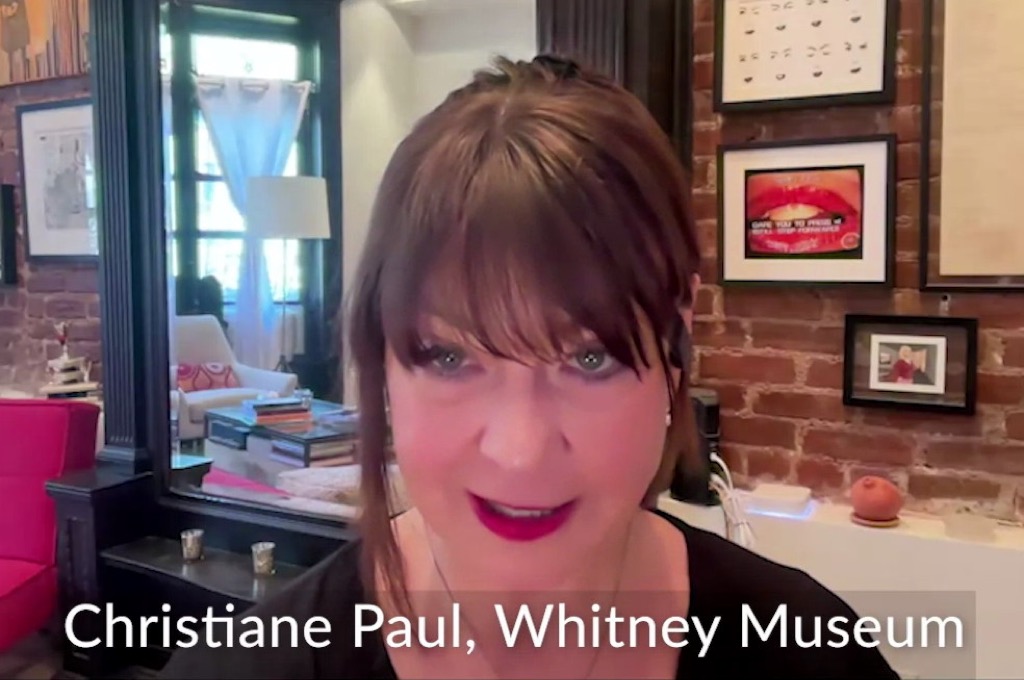 Digital Curation in the Shadow of AI
Digital Curation in the Shadow of AIThis presentation features digital trailblazer and Whitney Curator of Digital Art Christiane Paul on how artists explore the boundaries and blindspots of artificial intelligence.
 Harnessing AI for Education: When Is It Appropriate?
Harnessing AI for Education: When Is It Appropriate?This presentation from UMaine AI features New Media professor Jon Ippolito and Husson professor and IEEE chair Julia Upton.
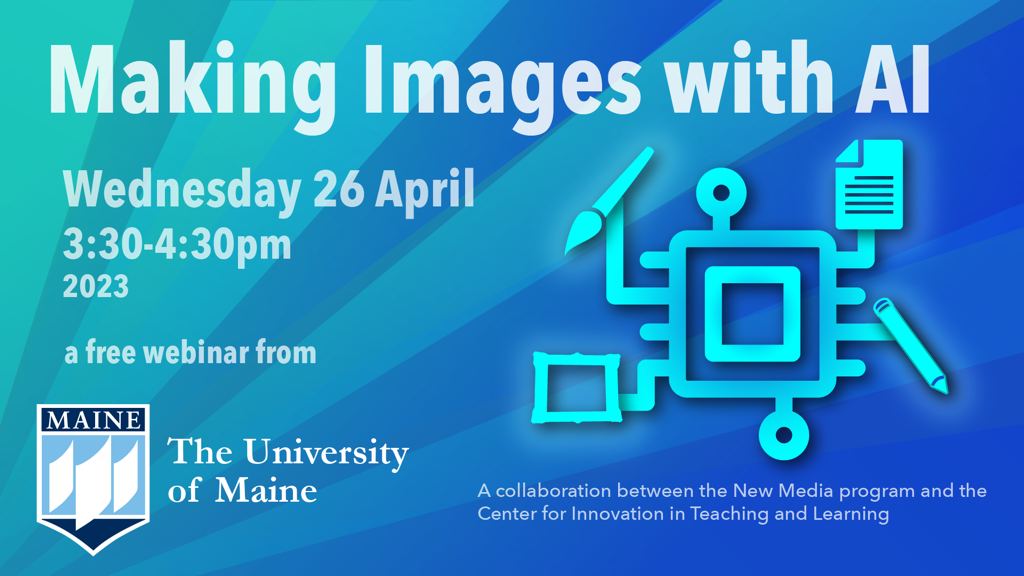 Making Images with AI
Making Images with AIThis New Media workshop demos a handful of these tools and entertains a discussion about how they might change art education as well as work prospects for creative professionals.
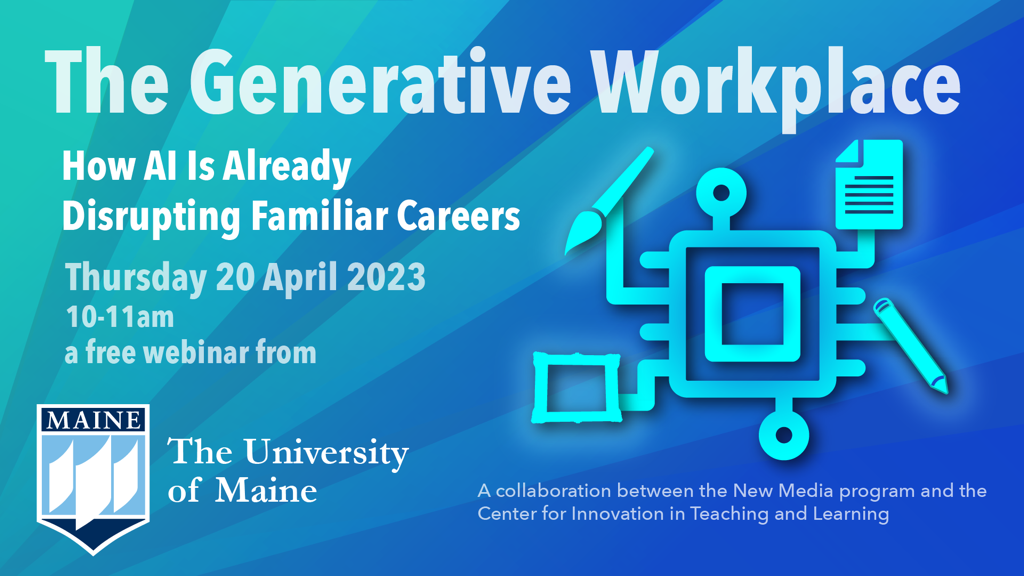 The Generative Workplace
The Generative WorkplaceThis New Media workshop offers reports from working professionals on ways that ChatGPT and Midjourney are having an impact today on business, software, and art.
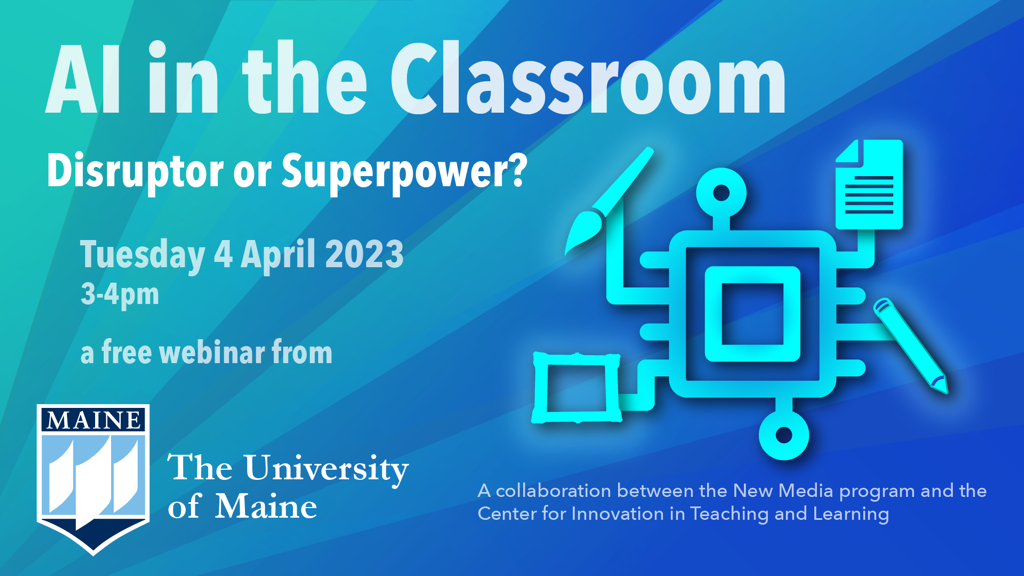 AI in the Classroom
AI in the ClassroomThis New Media workshop from 4 April 2023 showed how generative AI like ChatGPT works and why it raises so many pedagogical and ethical questions. The presenters also introduced UMaine's Learning With AI initiative, including resources and a toolkit to help teachers and learners transition to this brave new world.
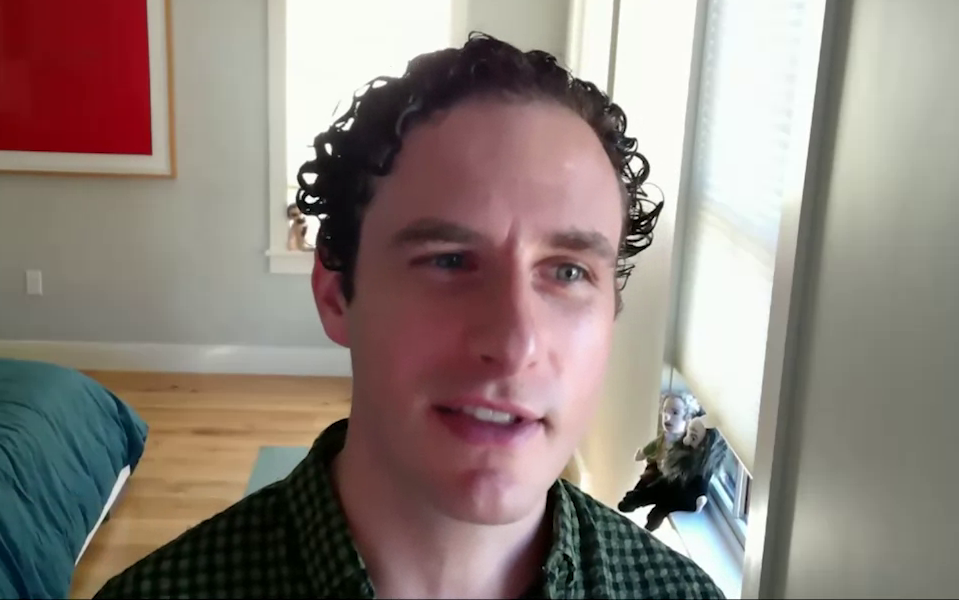 Glen Weyl
Glen Weyl00:00 The problem with centralized platforms
02:02 Proliferating alternatives
02:36 Weyl, Ohlhaver, and Buterin on soul-bound tokens
03:20 Topics for this webinar
04:33 Digital curation
05:00 Glossary of web3 terms
07:02 Problems with financialized/NFT-driven web3
08:47 From platform to protocol in cultural institutions
09:32 Tokens for social connection
14:27 Trusted identities v. deep fakes
17:51 Copies as surrogate for trust historically (Mike Maizels)
22:48 Tokenizing social connections
26:17 Empowering diverse coalitions
31:11 Can tokens move among communities over time? (Ryan Cassidy)
32:48 Correlated opinion v. factual truth (John Bell and Regina Harsanyi)
35:52 Fake tokens
38:05 Fact-determining processes v. knowledge as social construct (John Bell)
40:02 Technical sophistication required (Regina Harsanyi and Mike Maizels)
42:02 Embedding social context in data (AI)
44:46 Linear provenance v. larger context
47:32 NFTs and copyright
50:44 Critique of Creative Commons
53:30 Can blockchains reconnect us to local commons? (Joline Blais)
55:27 Geographic and digital divides (Heather Van Dyne)
57:27 Decentralization v. distributed, eg Mastodon (Mike Hanley)
60:23 Renewing trust in institutions (Casey Kelly)
62:49 Decentralized government in Taiwan
64:53 The Louvre v. Weblouvre
66:04 Micro-DAOs (Regina Harsanyi)
70:42 Do we need blockchain?
72:41 Alternative webs of trust? (Joline Blais, PGP)
74:51 Elitism and the digital divide (Rene Cepeda)
77:11 Including outsiders (John Bell)
80:45 Tech/AI for diversity
82:27 Privacy
84:40 The responsibility to innovate
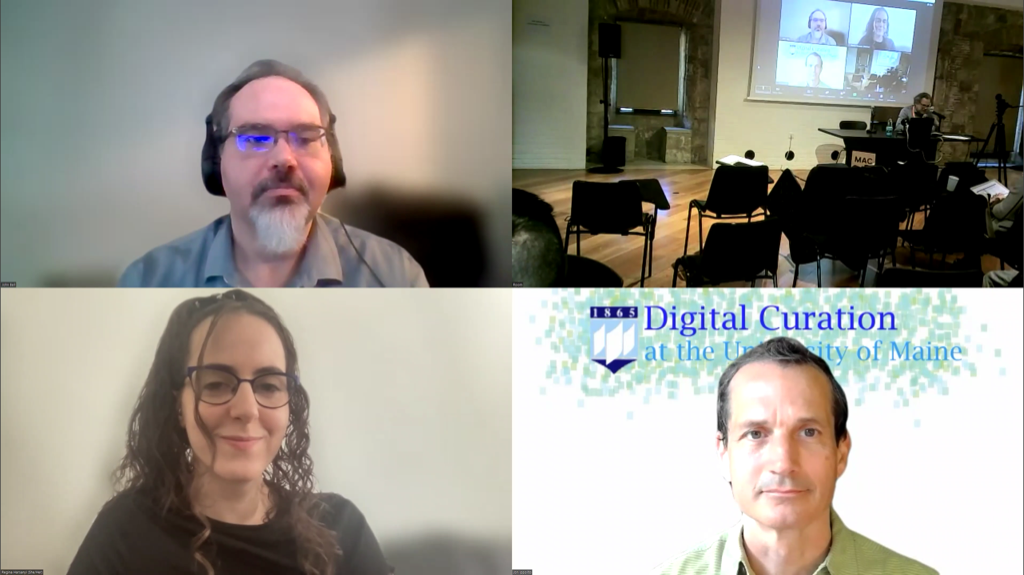 Regina Harsanyi, John Bell, and Jon Ippolito
Regina Harsanyi, John Bell, and Jon Ippolito00:00 Potential and challenges for blockchain as a preservation tool
What this panel is not about
Assumptions (right and wrong) about NFTs
03:08 The three parts of this presentation
03:48 "Receipts" as inappropriate metaphor for NFTs
05:11 Sample works with significant on-chain dependencies
Mad Dog Jones, John F. Simon, Jr., Rhea Myers, Kevin and Jennifer McCoy
07:48 Rhea Myers' Tokens Equal Text (2019)
09:23 Kevin and Jennifer McCoy's Quantum Leap (2021)
11:49 Time-based media documentation standards and NFTs
12:27 The vulnerability of blockchain nodes
Only 2000 Ethereum operators at the time of this talk
13:50 Blockchain failure points
15:00 Net art precedents
John F. Simon Jr's Unfolding Object (2001) and Keith Obadike's Blackness for Sale (2001)
16:58 Variable media strategies
18:01 Storage strategies
Expire, freeze, or sustain?
19:11 Migration strategies
20:23 Emulation strategies
Reset, fork, or continue?
21:26 Obscurity in blockchain technology
22:58 Components of a blockchain
25:20 Components of a blockchain-based artwork
26:55 Components of the viewer
27:36 The spectrum of paranoia
28:30 Reconstructing these components with a virtual machine
29:03 Open questions for blockchain emulation
Can public transactions really be emulated?
When should you collect a copy of the blockchain?
Should you reset, fork, or continue the existing chain?
30:38 Response from Oliver Grau
31:24 Will one museum suffice or is a network required to preserve a blockchain?
33:35 Are collections considering NFT works that engage cultural content rather than just code?
35:19 Is it possible to emulate currency transactions?
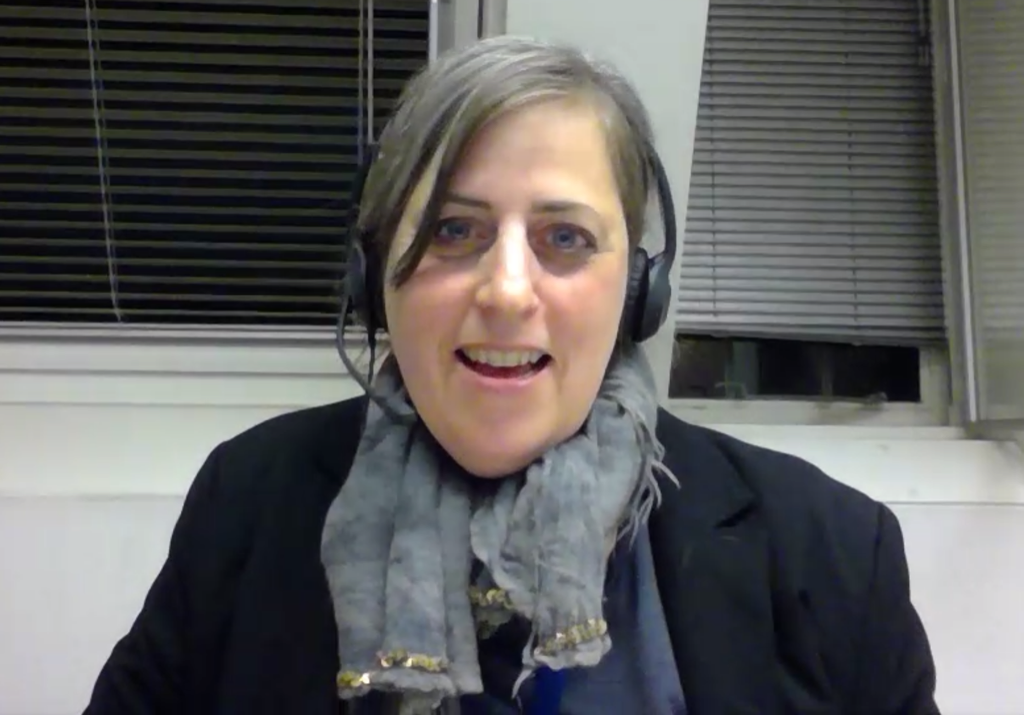 Shelley Lightburn, International Court of Justice
Shelley Lightburn, International Court of Justice00:00 Shelley Lightburn is introduced by Jon Ippolito
02:35 Lightburn's career path
14:28 Authenticity in a criminal tribunal
17:52 Exhibiting evidence
22:21 How was the website built?
23:02 Objects on display
25:08 Sharing evidence without tampering
28:49 Retention of digital versus physical evidence
34:25 The burden of preservation
36:10 Low budget and small staff?
41:00 Versions
41:46 Can you minimize the mediation inherent in digital representations?
44:35 Evidence on outdated platforms
49:49 Emulation and proving correlation
52:23 Failures of migration
55:25 Maintenance
57:35 Preserving 3d files
62:53 Theory versus practice
65:37 Wrap up
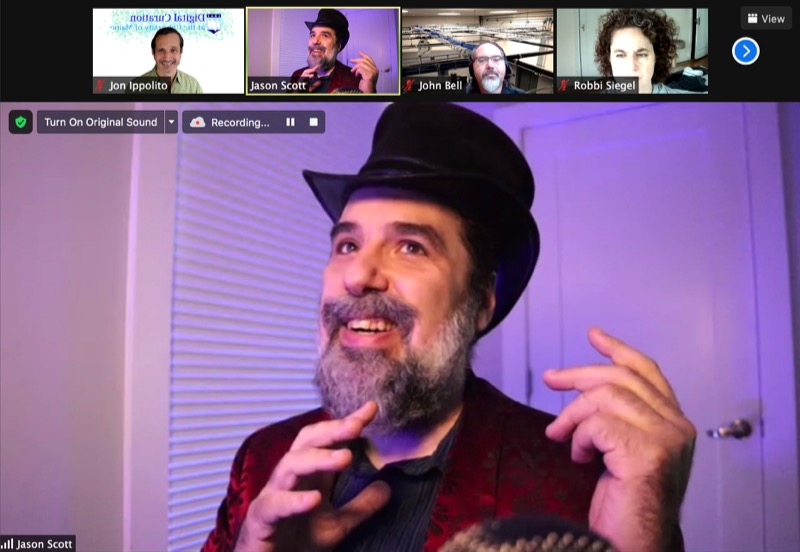 Jason Scott, Internet Archive
Jason Scott, Internet Archive0:00:00 Introduction to the program and Jason Scott (Jon Ippolito)
02:47 "I literally stumbled backwards into becoming a librarian and archivist"
12:30 Dealing with entropy
16:04 Working at the Internet Archive (and fan-made subtitles)
21:11 Being proactive with the press and preservation
22:34: Archive Team: "We think of ourselves as EMTs."
26:34 Rescuing content from dying platforms
32:41: At what point did you start to consider yourself an archivist? (Beth Sanders)
35:34 Taxonomic structure of the Internet Archive
37:59 Working with Brewster Kahle
41:43 What is the long-term strategy for the Internet Archive's existence? (Lorraine Scott)
45:29 How does the Archive handle intellectual property rights of uploaded material? (Beth Sanders)
51:32 When material arrives, do you see matchmaking opportunities for documentaries? (John Bell)
00:00 Is material acquired by Archive staff more important, or what's uploaded by the "little guys"? (Renee DesRoberts)
04:25 Managing oversharers with "Stacks"
10:21 How to play vintage games without downloading anything
17:58 Emulating Flash animations and games
25:31 Do you have to create a new emulator when you acquire a new format? (Renee DesRoberts)
35:40 How can we support the creation of more emulators?
48:20 Is there ever a time when the Archive is not the best repository for something? (Beth Sanders)
55:06 How long does it take for the Archive to digitize analog material? (Blair Mueller)
1:02:37 Who does the digitization? (Beth Sanders)
1:10:25 Do you and the Archive work with groups in other countries? (Thomas Walskaar)
1:12:55 How to contact Jason
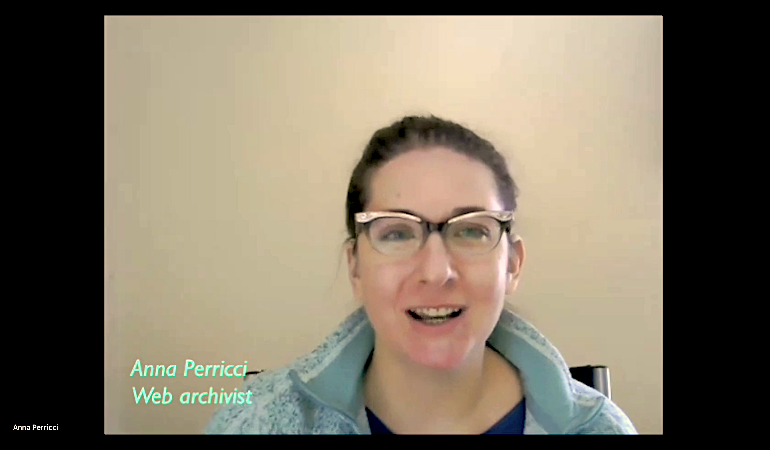 Anna Perricci, Rhizome/Webrecorder
Anna Perricci, Rhizome/Webrecorder00:00 Introduction to the program (Jon Ippolito)
01:04 Introducing Anna Perricci
05:01 Introduction to web archiving
06:55 Automated versus human-scale archiving
09:35 Community collecting with Occupy Wall Street, Internet Archive, and Documenting the Now
10:50 Introduction to Webrecorder
14:19 What is high-fidelity web archiving?
20:27 Built-in emulation of vintage browsers
21:19 Autopilot
21:26 How to get technical help
23:17 Archiving representative samples (Matthew Revitt)
25:40 More on Autopilot (Meagan Doyle)
27:36 Browsertrix (Alex Kaelin)
28:25 How to patch missing content (Colin Windhorst)
29:41 Demo of Webrecorder acting on a site
37:04 "Capture URL again" v. "Patch this URL" (Sarah Danser)
37:50 Using emulated browsers for both capture and playback (John Bell)
39:11 Time frame for archiving a social media site like Facebook (Renee DesRoberts)
40:22 Capturing beyond images, eg iframes and hidden web structures
42:07 Capturing data-driven websites (Cynde Moya)
43:08 Capturing outgoing requests, like a query in a search box (John)
44:02 Ease of patching compared to other tools (Sean Crawford)
44:18 Editing options (Kim Sawtelle)
46:02 Capturing live content in real-time, like streaming radio (Alex)
47:43 Saving local backups (Colin)
48:44 Capturing dead links, eg in Scalar books (Colin).
50:24 Case study of media-rich journalism (Rhonda Carpenter)
51:45 Archive-It and capturing database content (Matthew)
54:17 Top-down harvesters (such as OAIS) versus bottom-up, human-scale solutions.
57:47 How to get more information
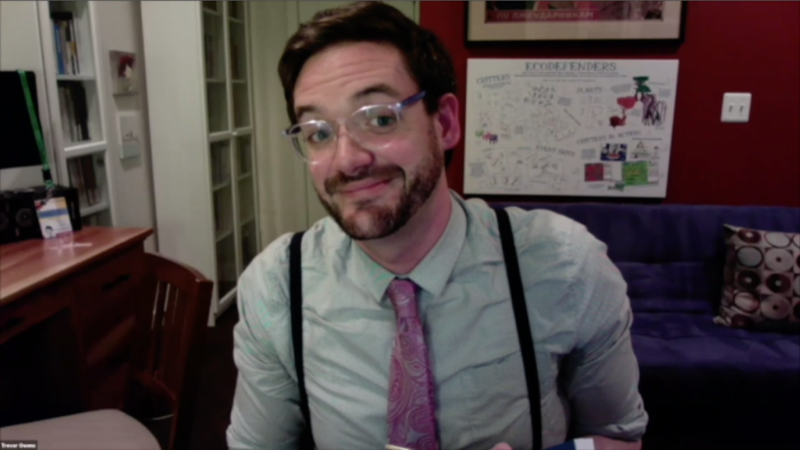 Trevor Owens, Library of Congress
Trevor Owens, Library of CongressApproximate timecodes in Hours: minutes
00:00 Introduction by Jon Ippolito
01:40 Inspirations for writing "Theory & Craft of Digital Preservation"
02:50 Overview of the book
04:55 Divergent preservation lineages
07:47 1. "A repository is not a piece of software"
08:39 2. "Institutions make preservation possible"
09:25 3. "Tools can get in the way as much as they can help"
09:55 4. "Nothing has been preserved, there are only things being preserved"
11:04 5. "Hoarding is not preservation"
11:50 6. "Backing up data is not digital preservation"
12:30 7. "The boundaries of digital objects are fuzzy"
14:21 8. "One person’s digital collection is another’s digital object is another’s dataset"
15:00 9. "Digital preservation is making the best use of resources to mitigate threats and risks"
16:03 10. "The answer to nearly every digital preservation question is 'It depends' "
16:51 11. "It’s long past time to start taking actions"
18:03 12. "Highly technical definitions of digital preservation are complicit in silencing the past"
19:02 13. "The affordances of digital media prompt a need for digital preservation to be entangled in digital collection development"
21:02 14. "Accept and embrace the archival sliver"
21:48 15. "The scale and inherent structures of digital information suggest working more with a shovel than with a tweezers"
22:48 16. "Doing digital preservation requires thinking like a futurist"
24:08 Anne Schlitt: Who are the futurists that you read?
26:35 Who determines our technological future?
27:53 Colin Cruickshank-Windhorst: Can a repository be too big?
32:14 How does the Library of Congress accommodate a futurist viewpoint?
36:07 Kyle Walton: What are the best practices for converting to paperless office?
40:05 How can digital details like the lowly spacer GIF shed light on decades of Internet aesthetics and politics?
46:22 Twitter as an example of a readymade collection.
48:42 Cruickshank-Windhorst: How do you work with grad students in community digital preservation projects?
54:13 Conclusion
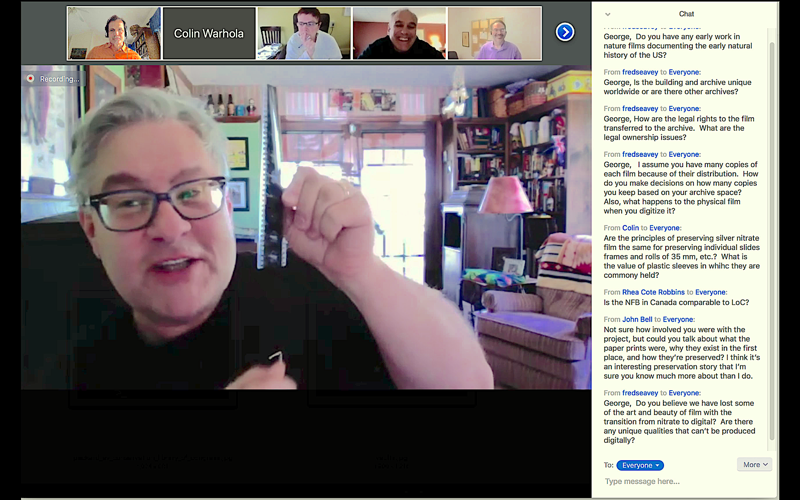 George Willeman, Library of Congress
George Willeman, Library of CongressApproximate timecodes in Hours: minutes
00:00 Introduction by Jon Ippolito
01:19 How George came to manage the nitrate film archive
04:25 Facts about the collection
05:02 The Culpeper complex (and the zombie apocalypse)
10:08 Vault conditions and discovery tools
12:24 Importance of a human archivist
14:02 Deterioration of nitrate films
16:10 Nitrate: an explosive medium
21:30 Safety (acetone) film isn't safe
25:28 What can you do about decaying formats?
27:02 Fred Seavey: what are the LoC's holdings of nature and educational films?
30:10 Other national film archives
30:50 Georges Melies and the beauty of reprinted negatives
32:13 The first 3d films
32:53 Legal rights and preservation
35:10 What copies should be saved for preservation?
36:35 Preserving film versus slide frames
38:07 How you get a print or copy from a negative?
39:51 What is lost and gained in going from film to digital?
41:29 Unique qualities that can’t be reproduced digitally
43:26 Process for digitizing film
44:35 Rhea Cote Robbins: How do US and Canadian film archives compare?
45:02 "Frozen Time": documentary on deteriorated nitrate by Bill Morrison
46:27 John Bell on paper prints
50:44 Preserving microfilm
51:35 Should old formats be discarded upon digitization?
52:20 Fred Seavey: initiatives for preserving home movies?
53:44 Mystery film of JFK's assassination
54:20 LoC's recommended digitization formats
56:50 Storage of digital formats
57:35 Magnetic tapes versus hard drives
58:10 Proportion of collection digitized
58:34 Offsite backup versus cloud
59:41 Colin Windhorst: how hard is adjusting to the transition to digital?
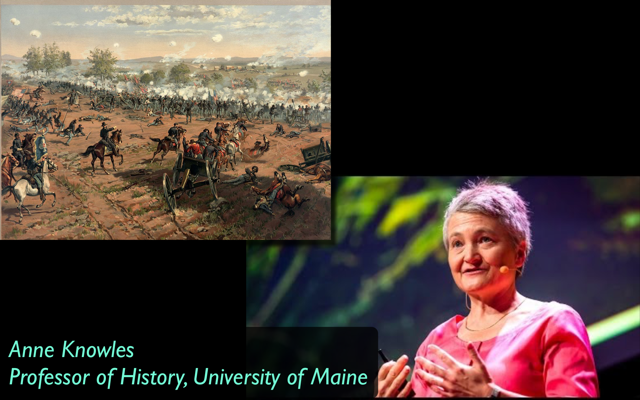 Anne Knowles, University of Maine historian
Anne Knowles, University of Maine historianApproximate timecodes in Hours: minutes
00:03 Introduction by Jon Ippolito
00:43 Introducing DIG students.
01:26 Anne introduces historical geography
03:53 GIS (Geographic Information Systems) versus GPS
04:30 "95% of information collected by humans is geographic"
06:22 Extracting digital insights from analog maps
07:30 Mapping the battle of Gettysburg
11:51 How to digitize an analog map
12:57 What could Robert E. Lee see at Gettysburg?
15:54 Shelley Lightburn on using geographic data for the United Nation's Missing Persons project
17:21 The need for better education about maps
18:18 Shelley on maps as crucial evidence in the International Criminal Tribunal
18:48 Viewshed analysis: what can be seen from points on a map
20:02 Mapping community health needs in rural Maine with GIS
22:03 Jo Ana Morfin on mapping as a generalizable practice
24:09 How to trace a printed map to produce a digital one
27:52 Combining analog maps with "digital stitching"
28:53 Scanning very large maps
30:48 Digitizing globes at the Osher library
31:16 Patricia Prescott on gantry scanners and cameras
32:31 The Holocaust and the limits and potentials of digital scholarship
32:45 Geographies of the Holocaust book
35:10 Mapping the difference between rhetoric and reality at Auschwitz
36:36 The problem with "perpetrators' maps"
36:50 Geographic distribution of concentration camps
38:19 How can we represent the qualitative experience of victims?
39:10 Tagging survivor testamonies with keywords
40:12 Natural language processing of transcripts
41:40 Beyond geographic maps: linguistic and emotional correlations
43:14 Authoritative v. subjective: perpetrators' facts and victims' stories
45:12 Natural language processing v. corpus linguistics in Shoah testimonies
47:04 Patricia on maps in maritime history
47:20 Colin on individual stories within large-scale systems, as in Schindler's list
48:35 Broader issues of digital curation
49:03 Colin on inferring human stories from data in rural Maine
50:22 Can interactive books bring human voices to mapping?
51:37 Paul Smitherman on comparing genders with Big Data techniques
52:19 The Maine Historical Atlas
53:07 Jo Ana on documenting political graffiti
54:35 Crowdsourcing metadata for the 60,000 keywords in Shoah videos
55:12 Another example of crowdsourcing: Art Crimes graffiti website
56:30 What should we archive in our increasingly visual world?
58:44 Colin: "Graffiti in ancient Rome was a pretechnological Twitter"
59:08 Challenges of opening up the Shoah archive
61:13 Scalar, open archives, and linked data
62:39 Do we risk bias by importing implicit spatial metaphors into the digital world?
65:58 Drawing by hand to awaken the spatial imagination
66:41 Paul: Is there a "human geography of Facebook"?
67:58 Facebook as geographic supplement to Arab Spring
68:50 Colin: letterforms as small-scale geography
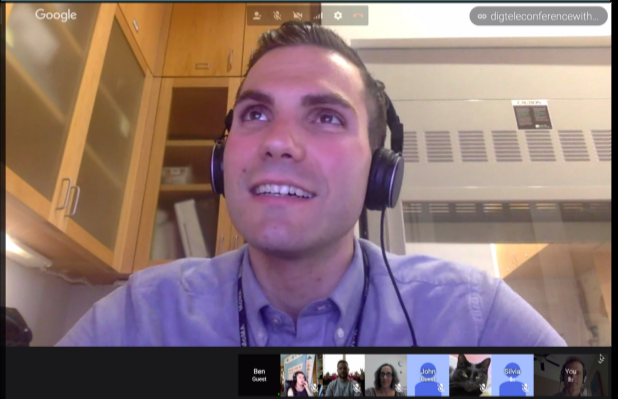 Ben Fino-Radin, Museum of Modern Art
Ben Fino-Radin, Museum of Modern ArtApproximate timecodes in Hours: minutes
00:00Introduction by Jon Ippolito.
01:48Ben Fino-Radin on acquiring the earliest Macintosh icons
07:21Obsolete media: digitizing obsolete floppy disks with the Kryoflux
11:09Obsolete file systems: imaging early Macintosh/Windows file systems
12:47Obsolete formats: using emulators to read disk formats
14:07Missing software: opening images without the program that created them
15:22How to provide access for curators
20:13Museum versus archival collections
21:24The first work of Internet art collected by a museum
23:17Missing software: how do you reconstruct server scripts?
27:31Handling error-filled content (invalid HTML)
28:41Forking a work into multiple versions
30:58Rewriting code and security concerns
32:31Restoring two versions of the same work
33:08The new, live version: a functioning participatory interface
33:43The restored, historic version: updating Web links with the WayBack Machine
35:51Multiple restorations with different purposes
38:12Web browsers as the future of media access
40:08Professional versus crowdsourced preservation
42:05Transfer Station (XFR STN), and a cat
45:42Solutions for small collections
46:19Case study: Cory Arcangel Studio
46:49DropBox for remote access and backup
48:32Infinite version history and checksums
49:38Binder: a digital repository manager developed at MoMA
50:38How to get Binder
51:53Matters of Media Art: Solutions for collections of middle scale
53:23Open-sourcing a website by hosting it on GitHub
55:18Re-casting older technology in openFrameworks
57:50Conclusion
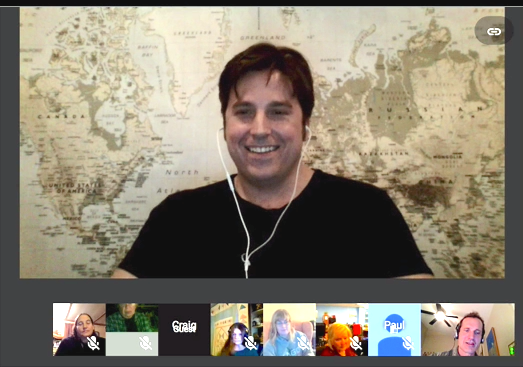 Craig Dietrich, Scalar/Mukurtu
Craig Dietrich, Scalar/MukurtuApproximate timecodes in Hours: minutes
00:00Introduction by Jon Ippolito.
02:09Craig Dietrich on his neighborhood and maps as technology
05:45Hypercities: an caveat about dependence on corporate platforms
09:00Katrina Wynn on comparable mapping projects
10:25Neatline
11:18Internet archive
15:04The Critical Commons copyright workaround
20:25Mukurtu Archive and Local Context
28:36What is metadata?
30:00Metadata for traditional knowledge
34:00Is enforcement of cultural norms necessary?
36:15Katrina Wynn: how is access controlled?
37:37Misuse of material from Shoah Foundation archive
39:26Introduction to Scalar
41:52Example of a digital edition: Ancient Monuments
47:00Easily make a digital book with Scalar
48:15Linking to archives with Scalar
55:10Tensor: a user-friendly archive lookup tool
59:18Round-tripping metadata
59:54Barbara Finley: does Scalar accommmodate Traditional Knowledge labels?
63:16Katrina Wynn: how can metadata protect sensitive material?
65:12Molly Carlson on Zaption, which inserts quizzes into video.
69:50Enforcing learning sequences via online tests
71:45Molly Carlson on standards-based education versus non-linear learning
73:07Hypothes.is, a community-based text annotator, integrated
76:34Katrina Wynn: how useful is the Dublic Core standard?
78:03How funding has influenced the rise of metadata
78:34Scholarly contributions to archives via metadata
79:59Dublic Core and alternative metadata standards
81:46Diane on the Omeka Neatline plugin
84:12Vectors version of Google Maps
85:11Tracking black ops flights with online maps
87:57Installing and using Mukurtu
89:29Installing and using Scalar
90:21Reclaim hosting and Scalar
91:20Conclusion
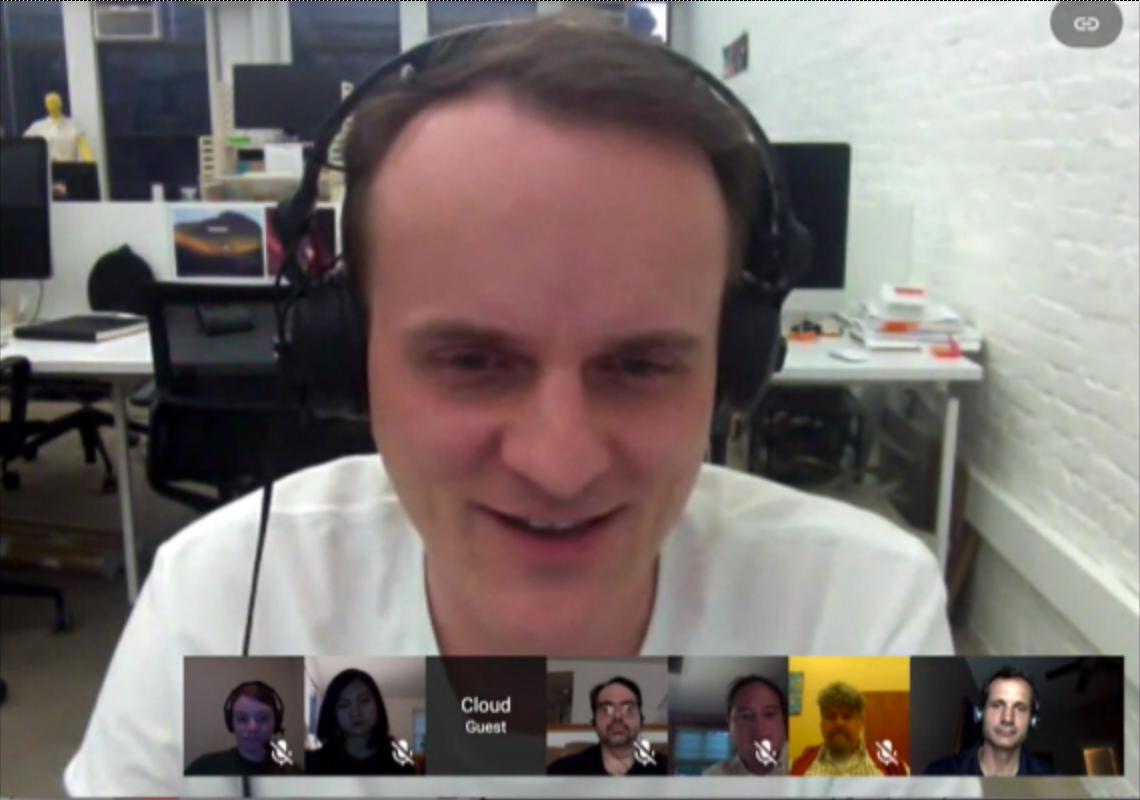 Dragan Espenschied, Rhizome
Dragan Espenschied, RhizomeApproximate timecodes in minutes:seconds
00:00 Introduction by Jon Ippolito.
00:24 Dragan Espenschied on Rhizome's mission.
01:50 Crowdsourcing archival acquisitions.
03:37 Obsolescence and the archive.
04:00 Problems of archiving social media.
07:18 Example: Facebook redesign.
08:02 Example: MySpace redesign.
08:52 Preserving records versus preserving user experience.
10:31 Jon's summary of challenges faced by Rhizome.
11:55 Scale for the Internet Archive and Rhizome.
15:22 Limits of metadata.
16:13 How do you know what software you need to run an artifact?
18:02 Preservation through access.
18:50 demo of bwFLA CD-ROM emulation.
22:08 Viewing a Mac OS9 "Read Me" document in browser-based emulation.
22:08 Viewing the Mac OS9 CD-ROM "Vexations" in browser-based emulation.
25:41 Advantage of saving only the differences between system configurations.
27:29 Viewing Theresa Duncan CD-ROMs in emulation.
28:01 Spawning an emulator in the cloud.
31:05 Why should collecting institutions help develop emulators?
32:55 How do you emulate network-based resources, like outdated URLs?
34:06 Resurrecting Geocities with a proxy server.
39:21 Researching history of software via DROID over Geocities.
40:40 Leveraging the Internet Archive for obsolete software.
42:14 Web archiving: public documents versus personal media.
44:05 Webrecorder archives Web content that a robot can't.
46:16 JavaScript, not HTML, is now the language of the Web.
48:07 The challenge of archiving Facebook.
49:47 Webrecorder contrasted with traditional Web archiving.
51:15 Archiving Instagram with Webrecorder.
52:45 Why we need to archive emojis.
54:38 Archiving Yelp with Webrecorder.
57:30 Where is the border of an online artifact?
57:58 The challenge of archiving results from search boxes.
1:03:10 What is a WARC file?
1:07:20 Why you need to save collections for each user.
1:08:19 Demo of Webrecorder applied to the New York Times.
1:12:11 Demo of Webrecorder applied to Vine.
1:12:27 Why archivists need futuristic approaches, and how art can help.
1:14:38 How browser-based emulation can focus on the work preserved.
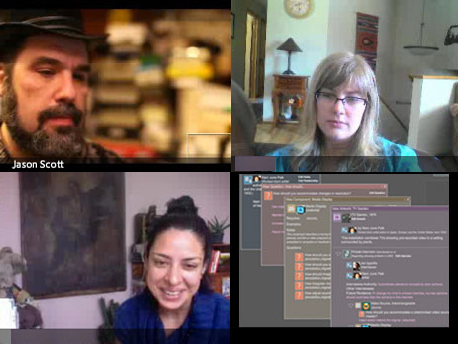 Jason Scott, Internet Archive
Jason Scott, Internet ArchiveApproximate timecodes in Hours:minutes
00:00 Introduction by Jon Ippolito.
00:02 Archive Team members check in.
00:03 Jen Bonnet describes her "Re-Gift" variable media case study.
00:08 Jo Ana Morfin describes her "No-Content.org" variable media case study.
00:10 Jen Bonnet on using the Variable Media Questionnaire.
00:12 Jason Scott on preserving journalism in a digital environment.
00:16 Printing from the browser-based emulator JSMESS.
00:21 Emulating different game consoles with JSMESS; exploiting modularity; JavaScript as cross-platform language.
00:26 Emulation helps expose intent of original creator.
00:35 Copyright as obstacle to preservation.
00:48 How do you decide what to preserve?
00:55 Storing artifacts versus networks of associations.
00:57 Limits of magnetic storage.
01:01 Storing context and ArchiveBot.
01:07 How to get the Archive Team to help you.
01:09 Difficulty preserving multi-user environments like social networks and game worlds.
01:13 Is there anything the Internet Archive would not archive? ("If nobody on Archive Team can come up with even the vaguest use case...")
01:19 Automated metadata creation, a la OCR.
01:18 "Students say they went into archives so they wouldn't have to deal with computers. They are so doomed."
01:22 Magnetic flux readers like Kryoflux.
01:29 Preserving data from the Internet of Things. (Will there be an Internet Archive equivalent of Google Streetview trucks?)
01:34 Constraints of historical technology (visualizing the ocean's doldrums).
01:37 Destruction as part of the digitization process. (Should you break a book's binding to scan it?)
01:38 Responsibility of creators to preserve their work. (Was President Chester Arthur justified in burning his papers two days before his death?)
01:46 Art and the right to be forgotten (as in ephemeral net art).
01:58 The obsession that is Archive Team. (18,000 manuals uploaded by Godane).
02:03 Crowdsourcing the file format problem and why it was a problem for industry professionals. ("They hated it. It was too expansive, we put everything in, like three-ring binders.")
02:08 Wrapup and shoutout to Archive Team.